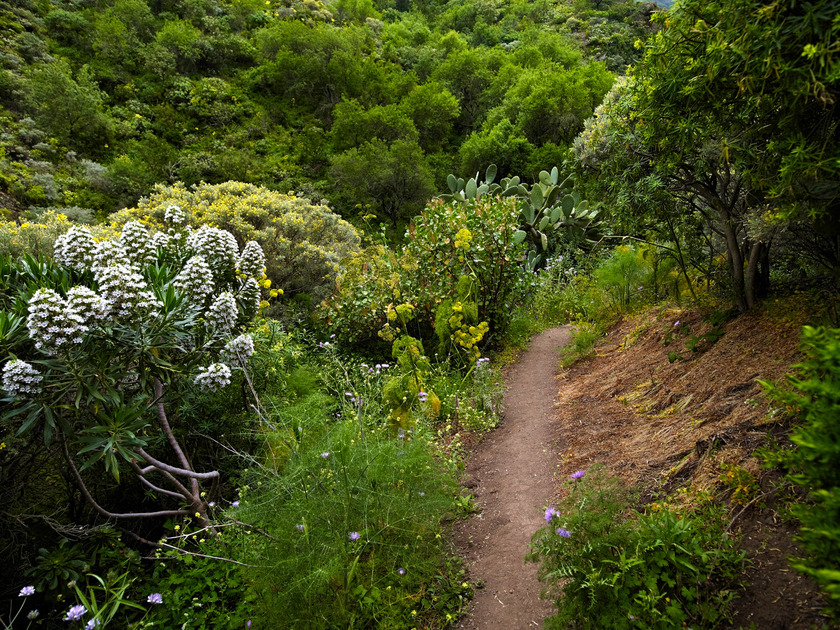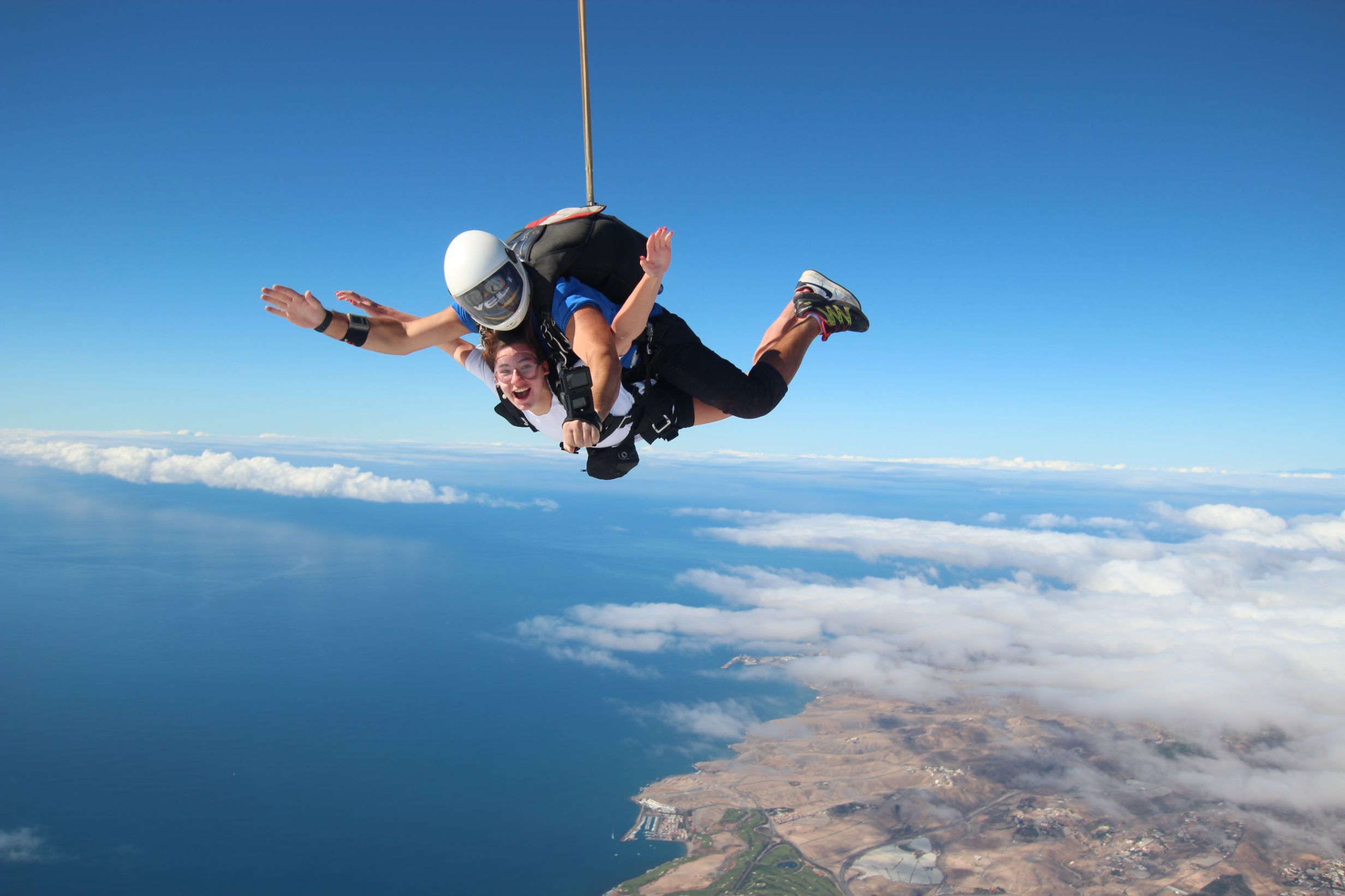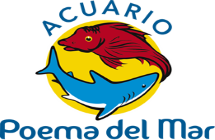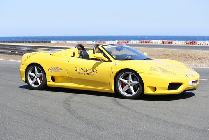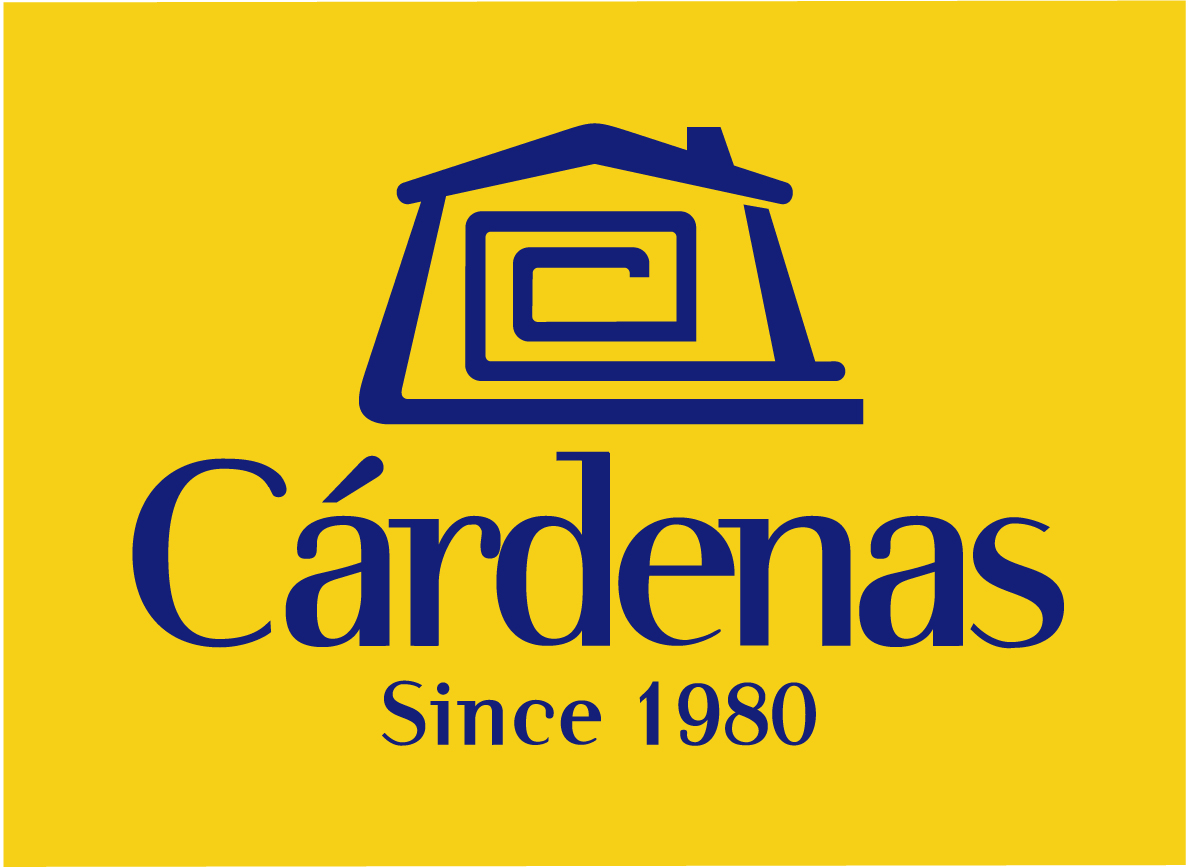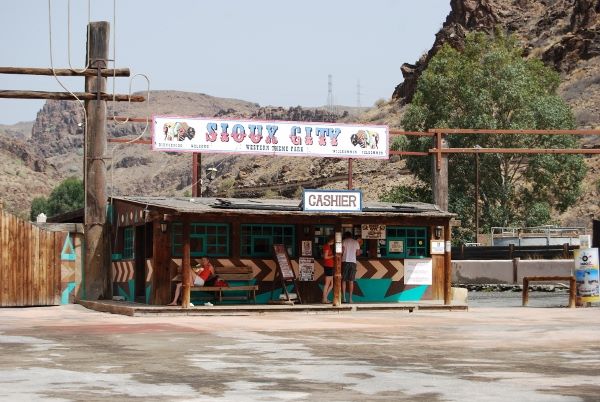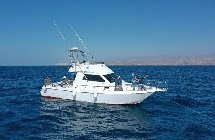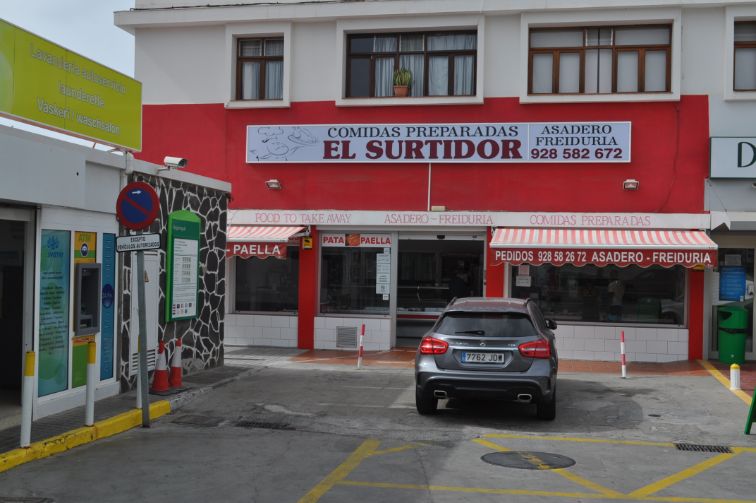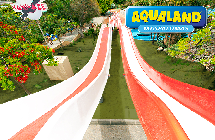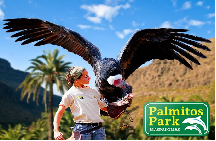Hiking Route 2. Caldera de Los Marteles – Las Vegas via Los Cernícalos ravine
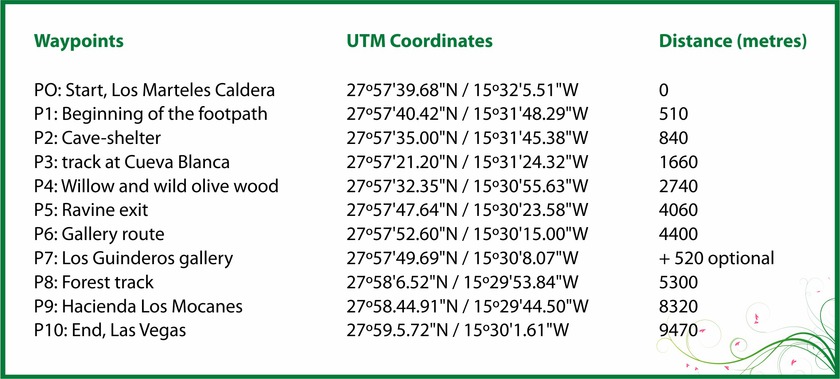 Starting point
Starting point
Los Marteles Caldera Altitude: 1530 m
Destination:
Las Vegas Altitude: 620 m
Total distance: 9490 m
Time to cover the Route: 4h. 30’
Direction of the Route: W-E
Net Difference in Altitude: 910 m
Difficulty rating: Medium-high

![]() The route includes one of the most interesting areas of the Los Marteles Special Nature Reserve. Los Marteles Caldera and the geomorphological elements of Los Cernícalos Ravine are tremendously interesting in themselves; in addition, the ravine has a permanent water course with waterfalls. No wonder that the biodiversity in the area is so rich, with a major presence of endemic plant species.
The route includes one of the most interesting areas of the Los Marteles Special Nature Reserve. Los Marteles Caldera and the geomorphological elements of Los Cernícalos Ravine are tremendously interesting in themselves; in addition, the ravine has a permanent water course with waterfalls. No wonder that the biodiversity in the area is so rich, with a major presence of endemic plant species.
The route begins on road GC-130, at point: P0 Start Los Marteles Caldera. From the viewpoint, we have a view of this caldera of phreatomagmatic origins, i.e. an eruption during which the magma comes into contact with water, resulting in an explosive eruption. From here we must walk E along a forest track that leads us into a reforestation pine forest (Pinus canariensis) growing, in this humid summit environment, on phreatomagmatic deposits from the Recent Cycle.
Leaving the pine forest behind, we shall pass an area of Quaternary basalt with pastures and crops that have been abandoned mostly; a fact that has led to their colonization by communities of broom-flatpod, including yellow broom (Teline microphylla), thyme (Micromeria benthamii) and Canary Island flatpod (Adenocarpus foliolosus).
After 510 metres we shall come to the beginning of a footpath on the right. We shall take it at point: P1 Los Cernícalos ravine footpath, at the head of the ravine, heading SW, where we shall begin to see a species that is endemic to the Reserve, Cotton Thistle (Onopordum carduelinum).
We shall make our way down the left-hand bank of the ravine and after about 33 metres, we shall come to point: P2 Shelter-cave, (alpendre) which will remind us that this route was used for transhumance, as it is historically a livestock area. The descent follows the channel that forms the border between the municipalities of Valsequillo and Telde.
After crossing to the right-hand side of the ravine and walking for about 820 metres, we shall come to a dirt track: P3 track at Cueva Blanca. This part of the route takes us through an area known as Cueva Blanca, where there is a mosaic of small plots of land, with various troglodyte examples of caves and “alpendres” on the left bank of the ravine.
The thermophilic vegetation in this area corresponds to a humid environment, as demonstrated by the main community of Gran Canaria wild olives (Olea europea cerasiformis).
The gorge becomes narrow with profiles in “V”, displaying meanders embedded in volcanic breccias and waterfalls related to coastal-differential outcomes.
We shall continue along the dirt track on the right-hand bank of the ravine, through this moist environment, for 1080 metres until we reach a footpath at the end. This section begins at point: P4 Willow and wild olive wood. From here we can see a grove of Canary Island willows or “saos” (Salix canariensis). It is the best willow wood in Gran Canaria, a damp forest thanks to a permanent water course. On the slopes, the “saos” give way to wild olive trees, combined with an undertree stratum in which we will be struck by the presence of isolated specimens of “peralillo” (Maytenus canariensis), a Canary Island endemism, and “orobal” (Withania aristata). The flower display is provided by a bush, white broom (Retama rhodorhizoides), while, at herbaceous level, there are two endemic species of the Canary Islands, “bicácaro” (Canarina canariensis) and “tacarontilla” (Dracunculus canariensis).
Here, the kestrel abounds, among other birds, justifying the name of the Los Cernícalos Ravine (the Kestrels’ Ravine). After about 340 m from point P4, we shall cross the ravine and keep to the left-hand bank. Once again, the livestock vocation of the area becomes evident by the presence of a set of caves shelters (alpendres) that are still in use.
After crossing to the right-hand bank of the ravine, we shall continue until we cross it for the last time. We are now 1260 metres from P4, where we shall leave the channel along the left bank, at point: P5 Ravine exit.
If we look at the geology, we will discover an area of phonolitic haüynite lava that contrasts with the Roque Nublo breccia. We shall start the ascent while observing the humid rock vegetation that has colonized these rocks, such as some “bejeques” (Aeonium percarneum), “cruzadilla” (Hypericum reflexum), “matorrisco” (Lavandula minutolii) and “granadillo” (Hypericum canariense), all endemic to the Canary Islands.
At point P6 Gallery route, about 360 m from P5, we shall find ourselves at the entrance to an alternative section on the right that will take us to point: P7 Guinderos gallery
Here, we shall find a gallery that feeds water into the bed of the ravine. This point is about 260 m to the SE. Once we have returned to P6, the route continues at the feet of some spectacular cliffs.
We shall continue walking 900 m to the NE, with spectacular views of the gorge that opens to the sea, and reach point: P8 Forest track. Keeping to the route through the area known as Castillo Hill, we will find a geological formation known as the Roque Nublo Cycle breccia. We shall keep on until we come to the N side of Castillo Hill, from where we will be able to see the town of Valsequillo.
The descent down the track leads to an area of fruit-bearing trees, abounding in almond trees (Prunus amygdalus), together with native species, such as “cañaheja (Ferula linkii) or “escobón”(Chamaecytisus proliferus).
We shall now link to a paved track that will take us in about 3 kmto point: P9 Hacienda de los Mocanes. An example of country architecture, this estate known as Las Haciendas del Marqués del Buen Suceso (Estate of the Marquis of Buen Suceso) already existed in 1851. The Martínez Montañez family owned his house, with its own chapel, which is now a place of great historical and ethnographic interest in Valsequillo.
From this point, we shall walk along a paved road through the Mocanes area, where the country landscape maintains its agricultural nature, with the presence of almond trees and buildings of great ethnographic value.
We shall then come, walking about 1170 m more, to Las Vegas, at point: P10 End Las Vegas, on the main Telde-San Mateo road, GC-41, above the neighbourhood’s social centre. This Valsequillo neighbourhood, which maintains its rural footprint, is an excellent place to regain our strength after the route by enjoying the excellent traditional food.





